Innotex RDG10 Stock Yellow Nomex IIIA Bunker Gear
$2,199.00
Bunker Gear
Our bunker gear is engineered for elite firefighter protection. Crafted from advanced flame-resistant materials, this gear ensures superior heat resistance, durability, and breathability. With reinforced stitching and ergonomic design, it provides unmatched comfort and mobility for high-intensity firefighting missions.
Bunker Gear: The Complete Guide to Firefighter Turnout Gear
When you see firefighters rushing into burning buildings, the bulky yellow or black outfits they wear represent one of the most advanced protective systems ever developed. This essential equipment, known as bunker gear or turnout gear, is literally what stands between firefighters and life-threatening hazards. Whether you’re considering a fire service career, work in emergency services, or simply want to understand what protects these everyday heroes, learning about bunker gear provides fascinating insight into modern firefighting technology and safety.
In this comprehensive guide, we’ll explore everything you need to know about bunker gear—from its sophisticated multi-layer construction and safety standards to proper usage and maintenance. You’ll discover why this protective ensemble is so crucial and how it has evolved to become the life-saving system used by firefighters worldwide.
About the Author: Our team includes certified firefighters and gear specialists with decades of combined experience using and maintaining bunker gear in real emergency situations. We’ve participated in gear testing, manufacturer training, and maintain current knowledge of NFPA standards to provide accurate, trustworthy information.

What Exactly is Bunker Gear?
Understanding the Terminology
The terms bunker gear, turnout gear, and firefighter turnout gear are often used interchangeably, but they all refer to the complete protective ensemble worn by firefighters during structural firefighting and other hazardous operations. The name “bunker gear” comes from the historical practice of firefighters sleeping in their stations (bunkers) ready to “turn out” immediately when calls came in.
More Than Just a “Firefighter Suit”
Modern bunker gear is a sophisticated personal protective equipment (PPE) system that includes:
-
Fire-resistant coat and pants (the turnout ensemble)
-
Self-contained breathing apparatus (SCBA)
-
Firefighting helmet
-
Protective gloves
-
Firefighting boots
-
Hood for neck and face protection
The Anatomy of Modern Bunker Gear
The Three-Layer Protection System
Modern turnout gear utilizes a sophisticated three-layer approach to protection:
1. Outer Shell:
-
Material: Advanced fabrics like Nomex, Kevlar, or PBI
-
Purpose: Resistance to flames, heat, and physical hazards
-
Features: Tear-resistant, water-repellent, and durable
-
Visibility: High-visibility stripes for safety
2. Moisture Barrier:
-
Material: Waterproof breathable membranes
-
Purpose: Prevents water and bloodborne pathogens from penetrating
-
Features: Allows sweat vapor to escape while blocking liquids
-
Importance: Critical for protection in wet environments
3. Thermal Liner:
-
Material: Multi-layer quilted fabrics
-
Purpose: Insulates against extreme temperatures
-
Features: Traps air for thermal protection
-
Comfort: Manages body heat and moisture
Additional Critical Components
Complete firefighter bunker gear includes several essential elements:
Structural Firefighting Coat:
-
Collar: Protects neck area and interfaces with SCBA
-
Pockets: Designed to avoid catching on obstacles
-
Wristlets: Provide secure interface with gloves
-
Drag Rescue Device: Allows unconscious firefighters to be pulled to safety
Protective Pants:
-
Suspender system: For secure fit
-
Reinforced knees and seat: For durability and protection
-
Boot straps: Keep pants properly positioned over boots
NFPA Standards and Safety Compliance
NFPA 1971: The Gold Standard
All legitimate bunker gear must comply with NFPA 1971 standards, which require:
Performance Testing:
-
Flame resistance: Must not sustain burning
-
Heat resistance: Withstand high temperatures without degradation
-
Tear strength: Resist ripping under stress
-
Water resistance: Repel water while allowing vapor transmission
-
Overall durability: Withstand rigorous field conditions
Specific Protection Requirements:
-
Thermal protective performance (TPP) ratings
-
Total heat loss (THL) for breathability
-
Bloodborne pathogen protection
-
Visibility enhancements for safety
-
Review current [NFPA 1971 standards] for complete technical specifications.
Certification and Compliance
Understanding bunker gear certifications:
-
UL Certification: Independent testing verification
-
Manufacturer compliance: Documentation requirements
-
Department specifications: Agency-specific requirements
-
Regular recertification: Ongoing compliance verification
Types of Bunker Gear and Specialized Variants
Traditional Structural Turnout Gear
The standard fire turnout gear for building fires features:
-
Maximum protection for structural firefighting
-
Heavier construction for extreme conditions
-
Complete encapsulation from head to toe
-
SCBA integration for respiratory protection
Technical Rescue Gear
Specialized firefighter turnouts for rescue operations:
-
Lighter weight for mobility
-
Enhanced flexibility for technical maneuvers
-
Different color schemes for team identification
-
Specialized pocket configurations
Proximity and Approach Gear
For specialized high-heat environments:
-
Aluminized surfaces for radiant heat reflection
-
Enhanced thermal protection for extreme temperatures
-
Specialized applications like aircraft firefighting
Proper Donning and Doffing Procedures
The Critical 60-Second Rule
Firefighters must be able to don their bunker gear in under 60 seconds:
Proper Donning Sequence:
-
Pants and boots – stepped into simultaneously
-
Coat – arms through sleeves and secured
-
Hood – positioned properly over head and neck
-
Helmet – secured with chin strap
-
Gloves – final item before entering hazard zone
-
SCBA – donned according to department procedures
Safety Considerations
Proper use of bunker turnout gear involves:
-
Complete coverage of all skin surfaces
-
Proper interface between gear components
-
Secure fastening of all closures
-
Regular practice to maintain proficiency
Maintenance and Care of Bunker Gear
Routine Cleaning Procedures
Proper maintenance of firefighter turnout gear is essential for safety:
After Each Use:
-
Visual inspection for damage or contamination
-
Surface cleaning to remove soot and debris
-
Proper hanging to air dry naturally
-
Documentation of any issues or exposures
Advanced Cleaning:
-
Advanced extractor cleaning for deep contamination
-
Specialized cleaning agents for different contaminants
-
Manufacturer-approved methods to preserve protection
-
Professional cleaning services for heavily soiled gear
Inspection and Repair Protocols
Regular inspection of bunker gear should include:
Weekly Checks:
-
Seam integrity and stitching condition
-
Reflective trim visibility and adhesion
-
Hardware function (zippers, snaps, hooks)
-
Moisture barrier integrity testing
Monthly Detailed Inspection:
-
Thermal liner condition and compression
-
Outer shell for cuts, abrasions, or degradation
-
Overall fit and comfort assessment
-
Documentation of wear patterns
The Science Behind the Protection
Thermal Protection Performance (TPP)
Understanding how bunker gear protects against heat:
TPP Ratings:
-
Minimum requirement: TPP 35 for structural gear
-
Typical range: TPP 35-50 for modern gear
-
Calculation: Time until second-degree burns occur
-
Real-world application: Protection duration in fire conditions
Total Heat Loss (THL)
The breathability factor of turnout gear:
-
Measurement: How much body heat escapes
-
Importance: Prevents heat stress during exertion
-
Balance: Between protection and comfort
-
Standards: Minimum THL requirements in NFPA 1971
Gear Limitations and Safety Considerations
Understanding Protection Boundaries
Even the best bunker gear has limitations:
Temperature Thresholds:
-
Short-term exposure: Up to 1,200°F for brief periods
-
Prolonged exposure: Significant risk above 500°F
-
Direct flame contact: Limited protection duration
-
Radiant heat: Gradual protection degradation
Time Limitations:
-
Air supply typically limits operational time
-
Heat buildup inside gear affects endurance
-
Physical exertion increases metabolic heat
-
Environmental conditions impact protection duration
Common Misconceptions
What bunker gear CANNOT do:
-
Make firefighters fireproof – protection is time-limited
-
Prevent all injuries – protection has boundaries
-
Replace proper tactics – gear supports, doesn’t replace skill
-
Last forever – regular replacement is necessary
The Evolution of Bunker Gear Technology
Historical Development
From leather to modern composites:
Early 20th Century:
-
Rubber coats and leather helmets
-
Limited protection from heat and chemicals
-
Minimal standardization across departments
Mid-Century Advances:
-
Synthetic materials introduction
-
Improved waterproofing technologies
-
Standardization efforts begin
Modern Era:
-
Advanced composites with specific properties
-
Integrated safety systems
-
Comprehensive standards and testing
-
Custom fitting and ergonomic designs
Proper Storage and Organization
Station Storage Best Practices
Maximizing bunker gear longevity and readiness:
Proper Hanging Methods:
-
Designated gear racks for each firefighter
-
Adequate air circulation around all components
-
Protection from direct sunlight and UV exposure
-
Clean, dry environment free from contaminants
Apparatus Storage:
-
Designated compartments for each set
-
Quick-access configurations
-
Protection from road grime and weather
-
Regular rotation and inspection
Frequently Asked Questions (FAQ)
Q1: How often should bunker gear be replaced?
NFPA 1851 recommends replacing bunker gear after 10 years from the manufacture date, but actual replacement may occur sooner based on wear, damage, or exposure. Many departments replace gear more frequently—typically every 5-7 years—due to heavy use and advancing technology. Regular inspections determine when gear no longer meets safety standards.
Q2: Can bunker gear be washed in regular washing machines?
No, bunker gear should never be washed in home washing machines. The advanced cleaning requires specialized industrial extractors, specific cleaning agents, and proper procedures to maintain the gear’s protective properties. Improper cleaning can damage moisture barriers, reduce flame resistance, and void manufacturer warranties.
Q3: Why is some bunker gear black and some yellow?
The color of turnout gear serves both practical and traditional purposes. Black gear shows less visible soot and dirt, while yellow and lime-green gear offers higher visibility in low-light conditions. Some departments choose colors based on tradition, while others select based on practical visibility considerations for member safety.
Q4: How much does a complete set of bunker gear weigh?
A complete set of modern bunker gear typically weighs between 45-75 pounds, including SCBA. The variation depends on materials, additional features, and specific components. This weight, combined with tools and equipment, means firefighters may carry 75-100+ pounds during operations, highlighting the physical demands of the profession.
Q5: What’s the difference between bunker gear and turnout gear?
While often used interchangeably, there’s a technical difference: Turnout gear specifically refers to the coat and pants ensemble, while bunker gear includes the complete protective system—turnout coat and pants, helmet, gloves, boots, hood, and SCBA. In practice, most firefighters use the terms interchangeably to mean their complete protective ensemble.
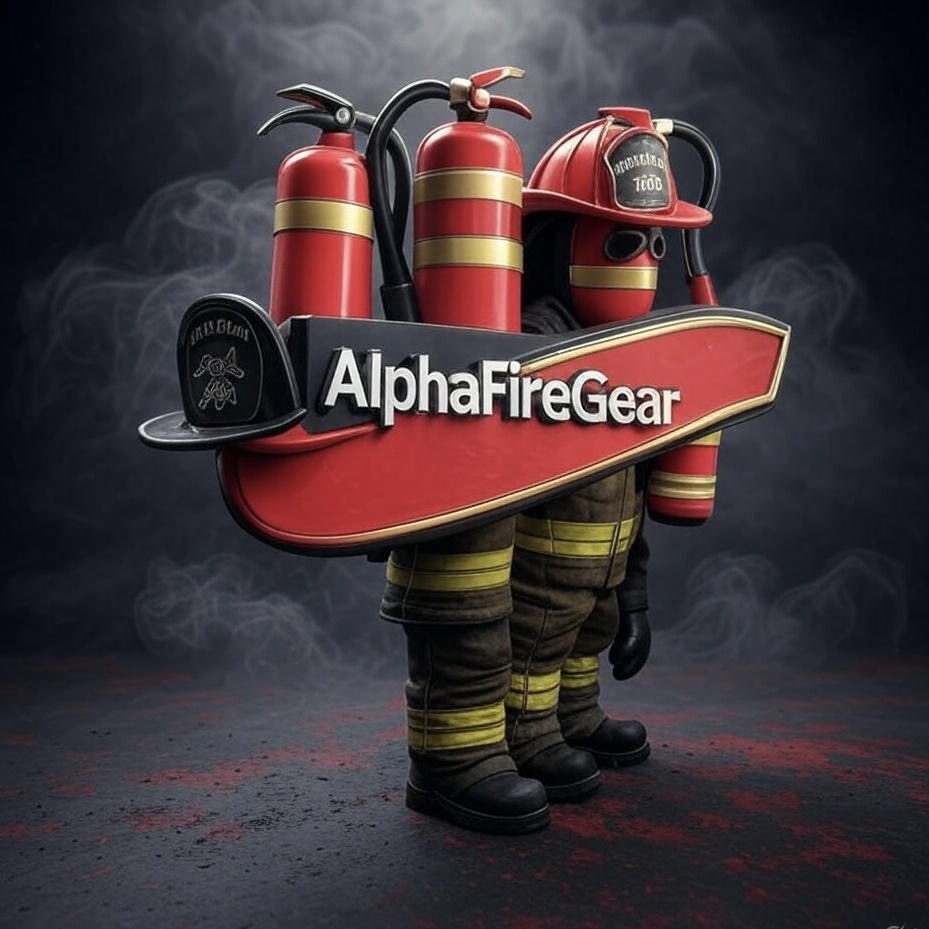
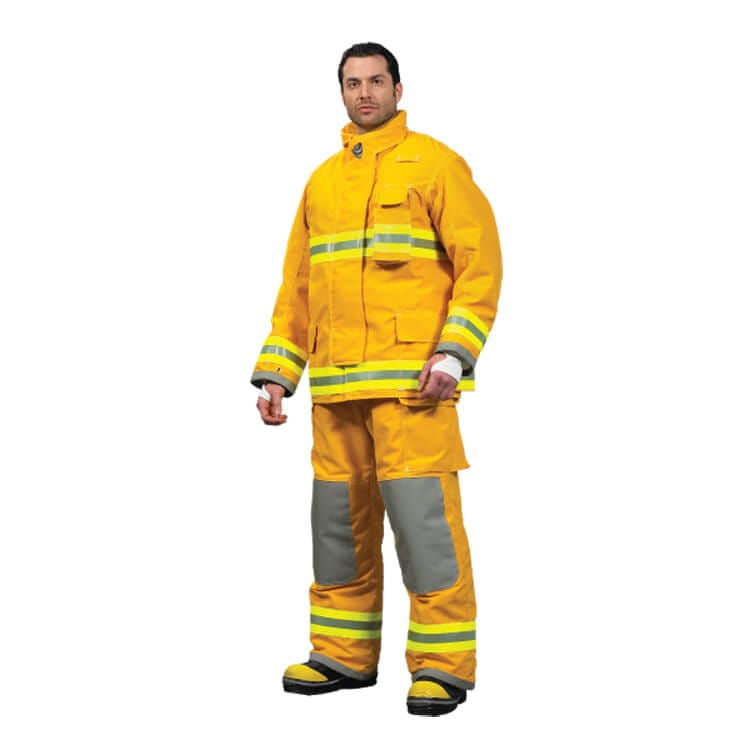
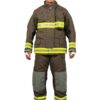
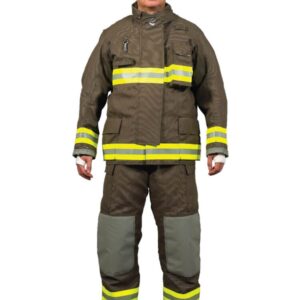
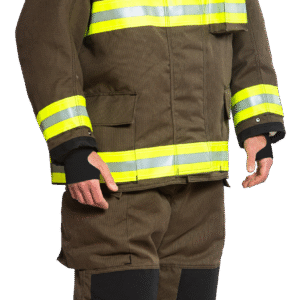
Reviews
There are no reviews yet.